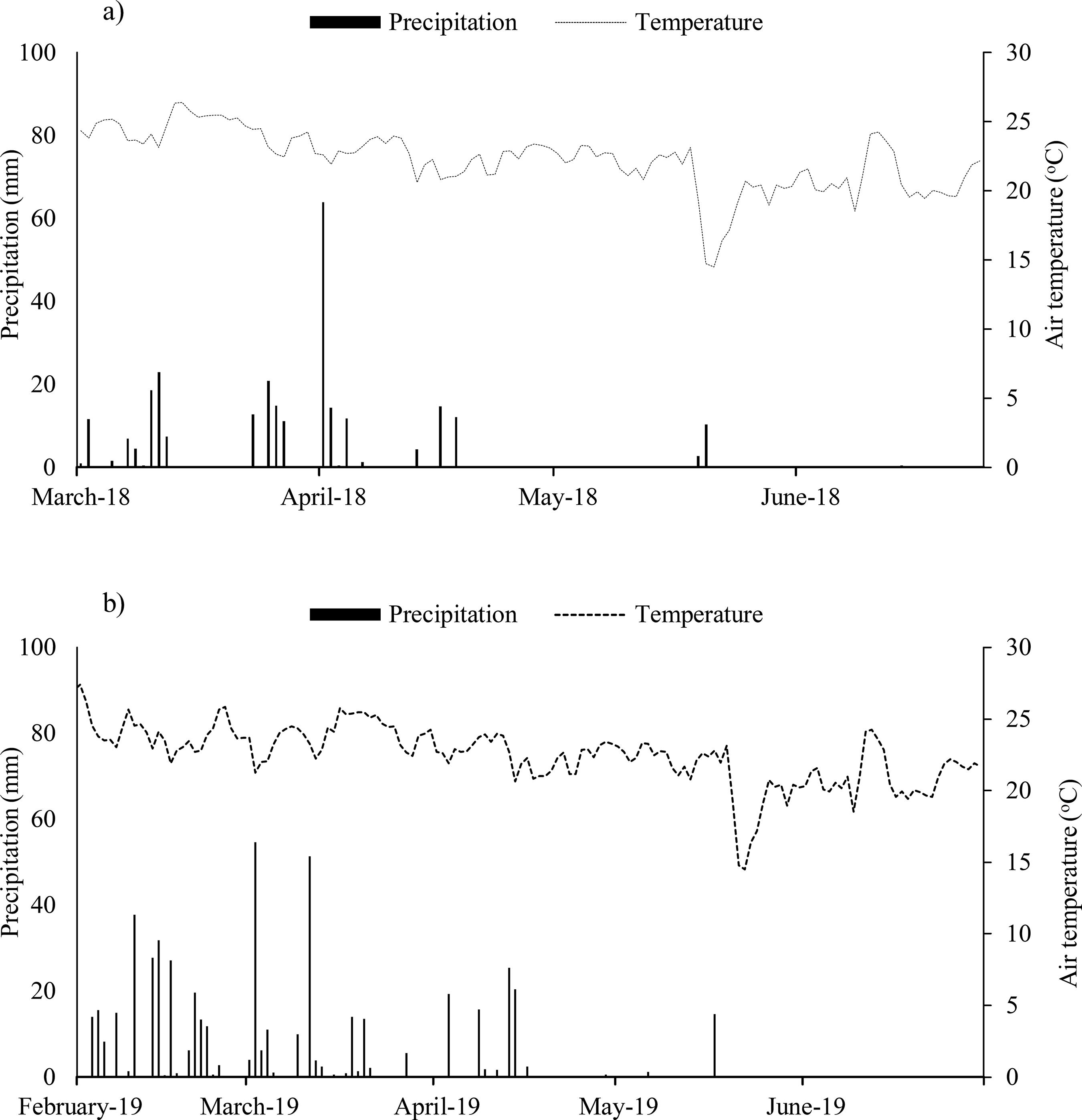ABSTRACT
The spatial arrangement of plants in the cultivation area is a factor that directly influences grain yield, since the best arrangement can result in the greater use of water, light and nutrients. The aim of the study was to evaluate the agronomic performance of sorghum sown in double row spacing in the Brazilian Cerrado. For this purpose, field experiments were conducted in the 2018 and 2019 seasons in a complete block design with a factorial scheme of 2 x 5. There were four replications, using two row spacing: traditional (0.50 m) and double rows (0.25 m/0.75 m) and five plant populations: 120, 180 (recommended), 240, 300 and 360 thousand, plants ha-1. Morphological characteristics, yield components and grain yield were evaluated using joint data analysis for the two years of study. In 2018, due to lower rainfall during the crop season, the use of a double row arrangement presented grain yield lower than traditional spacing. On the other hand, in 2019, the year with the best water distribution, the yield was superior to that of 2018. The increase in plant population per hectare increased the yield of sorghum grains, with gains of up to 24% in relation to the recommended population of 180 thousand plants ha-1, demonstrated that the densification in this crop can be a promising technique as long as its cost/benefit is considered.
Keywords:
Second crop season; Inter-row spacing; Sowing density; Sorghum bicolor



